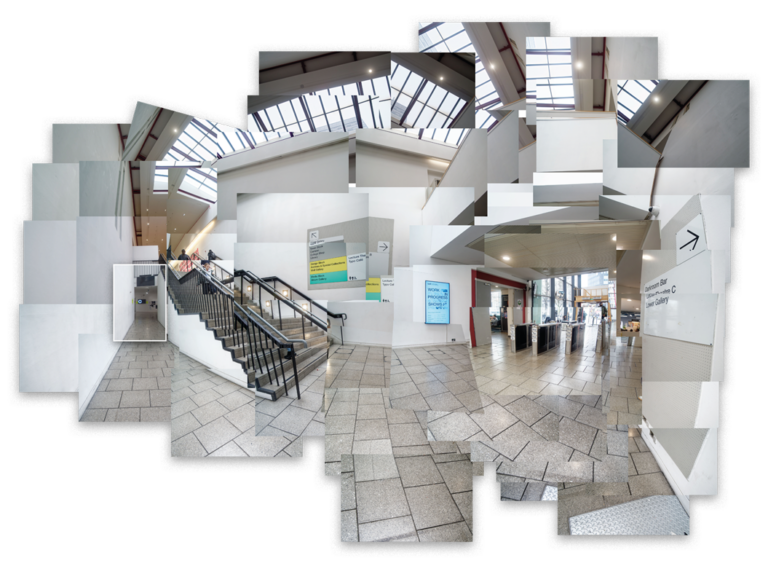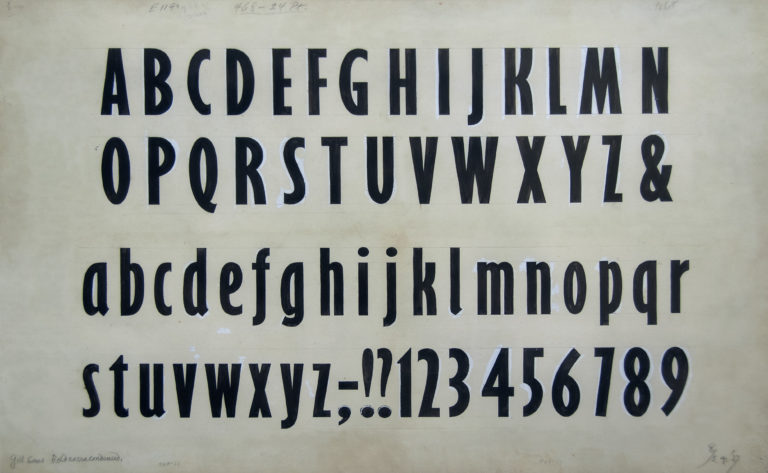Static graphics vs animated media
There’s more to creating good animations than most designers think, but that shouldn’t stop you from trying.
![]() In my experience, many designers — perhaps most of us — harbour a secret desire. No matter how into our particular form of creative mark-making we are, there’s a part of us that wants to work with moving images… meaning video and, in particular, animation. Dynamic, changing visual content is a seductive extention to the fixed,static graphics we normally deal with.
In my experience, many designers — perhaps most of us — harbour a secret desire. No matter how into our particular form of creative mark-making we are, there’s a part of us that wants to work with moving images… meaning video and, in particular, animation. Dynamic, changing visual content is a seductive extention to the fixed,static graphics we normally deal with.
This isn’t a new phenomena. When I was a student it was a bit tougher to make animations with computers. QuickTime was still to come, the Laserdisc was considered both viable and future-proof, and the term “multimedia” hadn’t yet become the butt of jokes, let alone had its second coming. As for the Internet, well, bulletin boards and the film War Games represented our online explorations. Yes, it was a while ago. But still, motion graphics had an allure even back then. That’s partly why QuickTime was so exciting when it appeared, roughly twenty years ago. Despite the low framerate and postage stamp-sized images it was a marvel; real video and animation, in almost any document. It promised the democratisation of a whole form of media by putting motion graphics into the hands of anyone with enough interest to play with it, not just video specialists dealing with arcane, expensive equipment.
It isn’t just the world of video, this is largely what has happened with almost every kind of media. The tools you and I use today let us do things that were the sacred preserve of armies of dedicated specialists only yesterday. Well, yesterday in poetic license terms anyway. Photo retouching? Put away that airbrush and Frisket masking film. Layouts? No Cow Gum, thanks. Presentations? We haven’t used 35mm slides for many years. Colour proofs can be done on the desktop and nobody makes film separations any more, typeface design requires no punchcutting or photoset originals… thank goodness things are easier now!
But is this democratisation of industries, the flattening of the landscape of specialisms and specialists, really an unalloyed good thing? Some of the skills those specialists had may no longer apply, but many others do. For example, while talking with one of my sons about his experimental animation work I sometimes find myself on the edge of my technical understanding, and end up learning as we talk. That’s because although today’s animation tools make getting started a wonderfully easy process, it still takes a long stretch of focused effort to truly master many animation creation and production ideas. That’s why people spend years at college studying rather than just going on a few ‘how to’ evening courses and buying a Dummies guide. In fact, that’s really where the issue lies: the difference between dealing with ideas and critical understanding rather than just methods and style techniques.
A traditional graphic designer setting out to explore animation needs to understand the difference between the two disciplines. We need to think about pace and timing, starting with what those words mean in this field. They’re not just abstract descriptors for how we encourage a viewer’s eye to travel through a traditional fixed layout. Should something show for one second or three? What about simultaneity; when should graphics ‘happen’ in a time-based production? When you add a timeline to the mix the creative process focus can change dramatically. You get a far greater control over the viewer’s experience – but it is also suddenly very easy to lose them entirely. Remember, a regular piece of graphic design for print or static screen use just sits there. It doesn’t move or change, so the viewer can devote as much or as little time as they want to taking it in. It doesn’t require any more committment than a glance, a moment of indeterminate length. Whereas video or animation work is all about lengths of time as well as the width and height of two-dimensional space.
You can’t just half-see a printed poster. Well, okay, you can if someone stands in front of it, or if you really don’t have time for more than the briefest glance. But print advertising revolves around the fact that we can take things in very quickly. In video and animation work it doesn’t work in quite the same way. There, if there’s a story being built up the viewer has to see at least almost all of it to get the message. It is true that sometimes a production is planned out specifically to avoid this issue and can get across the key point in just a few seconds, but that’s just working around the basic fact, not changing it. Effective, creative animation does take a serious level of mastering. Just because we may be (or at least consider ourselves to be) ‘experienced and creative practitioners’ of regular graphic design doesn’t mean we’re automatically going to be master auteurs.
 But don’t give up; there’s a flipside too. A skilled graphic designer can bring a different visual sensibility to an animation project. With a little lateral thinking the ideas behind grid systems, visual hierarchy, and forms of balance and asymmetry can be translated to animation. If you’re good, you can take aspects of whatever you know into different creative disciplines. You can even make a technique or approach recognisably your own, as Saul Bass did with his cut-paper animation style in the 1950s and 1960s. He straddled the designer-animator divide throughout his career and did so incredibly successfully too. He started off making print promotion design for film adverts, then in the mid-1950s began designing title sequences as well, starting with the ground-breaking opening credits for The Man With The Golden Arm. By mixing print design styles with filmic, time-based ideas he arrived at the then-new concept that movie credits themselves could be compelling and creative, not just forgettably informative. He also carried on with his more traditional graphic work, creating logos for companies as diverse as Bell Telecom, Continental Airlines, Quaker Oats, Minolta, YWCA, Geffen Records, Girl Scouts of the USA, and many others.
But don’t give up; there’s a flipside too. A skilled graphic designer can bring a different visual sensibility to an animation project. With a little lateral thinking the ideas behind grid systems, visual hierarchy, and forms of balance and asymmetry can be translated to animation. If you’re good, you can take aspects of whatever you know into different creative disciplines. You can even make a technique or approach recognisably your own, as Saul Bass did with his cut-paper animation style in the 1950s and 1960s. He straddled the designer-animator divide throughout his career and did so incredibly successfully too. He started off making print promotion design for film adverts, then in the mid-1950s began designing title sequences as well, starting with the ground-breaking opening credits for The Man With The Golden Arm. By mixing print design styles with filmic, time-based ideas he arrived at the then-new concept that movie credits themselves could be compelling and creative, not just forgettably informative. He also carried on with his more traditional graphic work, creating logos for companies as diverse as Bell Telecom, Continental Airlines, Quaker Oats, Minolta, YWCA, Geffen Records, Girl Scouts of the USA, and many others.
 |
 |
 |
 |
 |
 |
 |
 |
 |
What typifies Saul Bass’s work in both animation and logo design is simplicity. This is also what lies behind the long-term success of his output. His animated credit sequences are clever but never fiddly or fussy, and his logo designs are iconic and incredibly long-lasting. As Christian Annyas points out on the annyas.com blog (bit.ly/saul-bass-logos), the average lifespan of a Saul Bass logo is 34 years, and many are even older: the Japanese Kosé Cosmetics firm logo dates from 1959 and hasn’t been touched since. Bell lasted from 1969 to 1984, when he was asked to design the logo for AT&T, Bell’s successor. That one lasted 19 years, but it was eventually butchered in 2005 by Interbrand. The Warner Communications logo is still in use by Warner Music Group, and Minolta’s 1978 logo lasted until it was given a minor (and questionable) tweak in 2003.
The big point here is that Saul Bass applied graphic design concepts to animation projects and came up with an approach that was not only successful, it also influenced the visual style of a whole era. Clearly, it is possible to cross the print designer/animator divide and do great work. And while you’re pondering the opportunities and fun that animation offers, see what other creative fields you could expand into. Never think it’ll be easy, but don’t give up either. The broader your horizons, the more you have to draw on when you’re faced with a new assignment.






